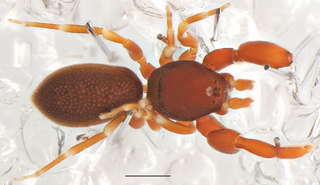
The sap beetles, also known as Nitidulidae, are a family of beetles.

Convolvulaceae, known commonly as the bindweed or morning glory family, is a family of about 60 genera and more than 1,650 species of mostly herbaceous vines, but also trees, shrubs and herbs, and also including the sweet potato and a few other food tubers.

Namaqua National Park is a South African national park situated approximately 495 km north of Cape Town and 22 km northwest of Kamieskroon. It has an area of more than 1300 km2. The park is part of Namaqualand, an area covering 55,000 km2 located within the semi-desert Succulent Karoo biome. This biome is a biodiversity hotspot with the largest concentration of succulent plants in the world. The park also has an arid environment with succulent plants. The park was created to protect its flowers. During the spring, wildflowers bloom there in a spectacular fashion. The park's main tourist attraction is this abundant spring bloom of brightly coloured wildflowers.

Alidus biplagiatus is a species of beetle in the family Cerambycidae, and the only species in the genus Alidus. It was described by Gahan in 1893.
Monochamus biplagiatus is a species of beetle in the family Cerambycidae. It was described by Stephan von Breuning in 1935.

Diaphorocellus is a genus of African palp-footed spiders that was first described by Eugène Louis Simon in 1893.
Nicentrus is a genus of flower weevils in the beetle family Curculionidae. There are more than 90 described species in Nicentrus.
Xestolabus is a genus of leaf-rolling weevils in the beetle family Attelabidae. There are at least 30 described species in Xestolabus.
Spilodiscus biplagiatus is a species of clown beetle in the family Histeridae. It is found in Central America and North America.
Milesia scutellata is a species of syrphid fly in the family Syrphidae.
Chrysotoxum chinook is a species of syrphid fly in the family Syrphidae.

Cyllodes is a genus of sap-feeding beetles in the family Nitidulidae. There are about 14 described species in Cyllodes.
Nipus biplagiatus is a species of lady beetle in the family Coccinellidae. It is found in North America.
Nipus is a genus of lady beetles in the family Coccinellidae. There are at least four described species in Nipus.
Sphecomyia nasica is a species of syrphid fly in the family Syrphidae.
Spilomyia liturata is a species of syrphid fly in the family Syrphidae.
Hilipinus is a genus of pine weevils in the beetle family Curculionidae. There are at least 50 described species in Hilipinus.
Malacorhinus is a genus of skeletonizing leaf beetles in the family Chrysomelidae. There are about 11 described species in Malacorhinus. They are found in North America and the Neotropics.
Axinopalpus biplagiatus is a species of ground beetle in the family Carabidae. It is found in North America.
Animal Ethics is a nonprofit organization formed to promote discussion and debate around issues in animal ethics and to provide information and resources for animal advocates. They also do outreach work in several countries on the issue of speciesism. Their aim is to create a world where moral consideration is extended to all sentient beings. The organization's website covers topics such as speciesism, sentience, veganism and wild animal suffering and has content translated into several languages.





